Reflection on Mary MacKillop
February 8, 2020It was my privilege to enjoy the love and friendship of Mother Mary of the Cross.
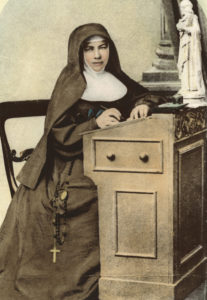 From the first day I met her as Superioress of Mount Street Convent [North Sydney], where I put in my Novitiate, until the day of her death, a period of about twenty years, during which I had many opportunities of knowing her worth.
From the first day I met her as Superioress of Mount Street Convent [North Sydney], where I put in my Novitiate, until the day of her death, a period of about twenty years, during which I had many opportunities of knowing her worth.
Mother Mary was a noble woman, blessed with rare vision and holiness. Where the glory to God and duty to others were concerned she was full of moral courage, fearing no human opinion, always acting according to the dictates of conscience.
My first experience of Mother Mary’s charity was one day when going with her as companion to the city. We were waiting at the corner of the street near Mount St Post Office for a tram. A young woman came staggering along and at last reached and rested by the stone on the side of the footpath. Being young and inexperienced I naturally thought the woman was intoxicated but Mother’s quick eye detected something more serious. She said to me ‘Come along dear and see what is wrong with this poor woman.’ On getting up to her we found the woman was very ill. Mother asked if she could do anything for her. The woman said if he could get to the chemist’s nearby as she knew what would relieve her. The three of us then went to the chemist’s where the patient was attended to and we waited until she felt better. This act of Charity on Mother’s part made a lasting impression on the rest of my life.” [1]
Over the past months we have experienced global turmoil and disasters. In Australia the plight of the nation and the planet have raised out awareness to the absolute need of being connected. We have witnessed amazing heroism, generosity and deep sharing in unbelievably big and small ways.
Mary MacKillop was a person who spent her life reaching out, giving and connecting. God’s presence was a dominant feature of her life. The witness we have experience in a nation’s response is Mary’s call to us in every-day life. God is with us in it all, good or challenging.
- Let us ask ourselves whether Mary MacKillop’s inspirational response of reaching out, giving and connecting can become a natural call to all of us?
- What aspects of Sr Helena’s story enabled you to experience the generous spirit of Mary MacKillop?
- What gift can you express more fully?
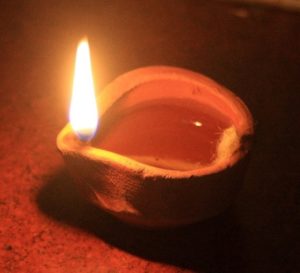 Let us light a candle which reminds us that Christ is the light of the world.
Let us light a candle which reminds us that Christ is the light of the world.
Take time to reflect and recount the blessings of the past days.
Pray in gratitude.
Michele Shipperley rsj
Footnote:
[1] Sister M Helena McCarthy, Tokaanu, NZ. 1 December 1925 p. 71. Excerpts taken from Memories of Mary by those who knew her, Sisters of St Joseph 1925-1926.
Feast of Saint Josephine Bakhita
Human Trafficking is the face of Modern Day Slavery today.
On January 2015, Pope Francis, on the World Day of Peace called us to take action against trafficked women, children and men all over the world so that they are:
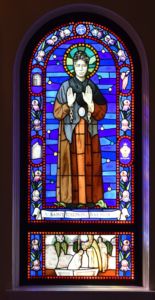 Pope Francis has chosen 8 February, the feast of St. Josephine Bakhita who is the patron saint of Sudan and victims of slavery, to be a day of prayer, reflection and action. Born in Sudan, Josephine knew the sorrow of losing her freedom and family. She was kidnapped at the age of seven and was sold many times, before being freed and becoming a Canossian sister.
Pope Francis has chosen 8 February, the feast of St. Josephine Bakhita who is the patron saint of Sudan and victims of slavery, to be a day of prayer, reflection and action. Born in Sudan, Josephine knew the sorrow of losing her freedom and family. She was kidnapped at the age of seven and was sold many times, before being freed and becoming a Canossian sister.
Today, the United Nations estimates that one in every three victims of trafficking is a child. Slavery has existed for thousands of years but economic and social forces have seen an alarming resurgence in the past few decades. Modern slaves are cheap and disposable, purchased and thrown away
Slavery flows into our homes, offices and schools through the many products we purchase. As members of the Global Community we are consumers, unwittingly contributing to slavery. Have you ever stopped to consider that what you are wearing is at the cost of someone else’s misery? We can stop this terrible offence of human dignity by buying Fairtrade and UTZ Certified and Rainforest chocolates. We can also make a difference by purchasing Australian caught and responsibly sourced seafood such as MSC and WWF labelled seafood.
Sr Margaret Ng rsj
You’re invited to read about Sr Margaret’s ministry below:
Josephite Counter-Trafficking Project
Provided below is prayer you can use for the International Day of Prayer and Awareness Against Human Trafficking (8 February):
2020 Prayer – Together Against Trafficking (PDF)
Photo: Stained Glass of St. Josephine Bakhita, Saint John Paul II Chapel, Mundelein taken by Fr. Gaurav Shroff obtained from flickr. (CC BY-NC-ND 2.0)
Jubilee Celebration for Our Elders 2020
February 7, 2020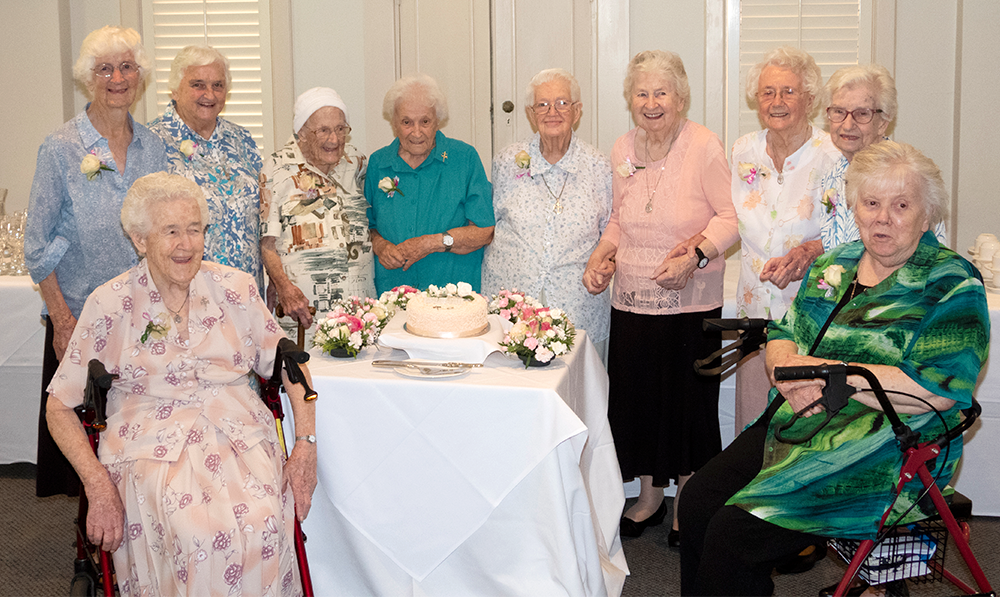
Recently, a very gentle, beautifully conducted ceremony took place at North Sydney.
It was held in honour of the ninety plus year old sisters who had come together to celebrate the platinum (70 years), tourmaline (75 years) or tanzanite (80 years) jubilees of the religious profession they had made so long ago.
Julian Tenison Woods: A Life – Chapter 1st
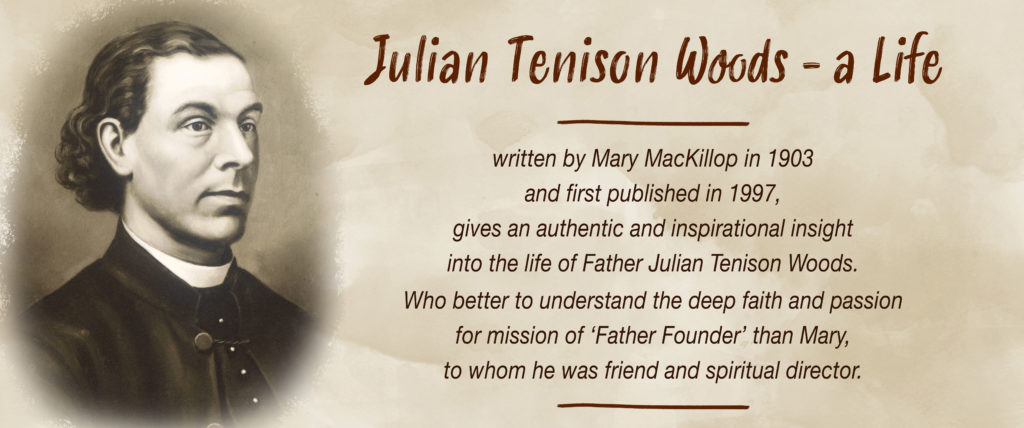
Chapter 1st
The Rev. J.E.T. Woods was born in West Square, Southwark, London, on 15 November, 1832. He was the sixth son and seventh child of Mr James Dominick Woods, Q.C. and F.S.A. of the Middle Temple (and of Sydenham Kent), Barrister at law – and Henrietta Marie St Eloy Tenison, fourth daughter of the Rev. Joseph Tenison, Rector of Donoughmore Glebe, in the county of Wicklow, Ireland, and deputy governor and justice of the peace in the same county. The Rev. Joseph Tenison was son of the Bishop of Ossory, and grand nephew of Thomas Tenison, Archbishop of Canterbury.
Waitangi Day
February 6, 2020To know something about how New Zealand celebrates Waitangi Day, one needs to look back in history to learn how the Treaty has come to significance.

The Treaty of Waitangi [1] first signed on 6 February 1840 is an agreement between Maori, the first people of Aotearoa New Zealand and the British Crown. The Treaty was later taken to different parts of the country to be signed by leaders of Iwi (tribes) who were not at the original signing. At the time of the signing Maori vastly outnumbered Pakeha, forty to one.
The Treaty was written in both Te Reo (the Maori Language) and in English. The two versions were not exactly the same. In cases like this, the United Nations authorities would point out that the treaty of the indigenous peoples would be the correct version to follow. In the Te Reo version, Maori did not give up sovereignty (or their authority) over their lands, forests and fisheries.
Maori were very upset with the amount of land that had been taken from their ownership. Strategies of war and the law dispossessed Maori of much of their land. If Maori chose not to sell their land to the Crown they were called ‘rebellious natives’ and there would be a war declared and the land seized. The British understood land ownership as individual ownership or title. Maori used tribal ownership (many owners). Maori were required to register their lands with the Land Courts which was a long and expensive process.
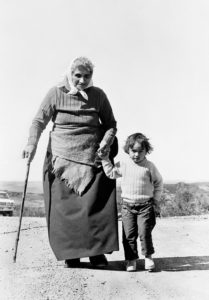
The Labour Prime Minister Norm Kirk changed the name Waitangi Day to New Zealand Day in 1974, the name was changed back to Waitangi Day by the following National Government to emphasize the importance of the Treaty between Maori and the Crown. Although there are still settlements to be made, Maori and Pakeha are working through current issues to find just and lasting solutions.
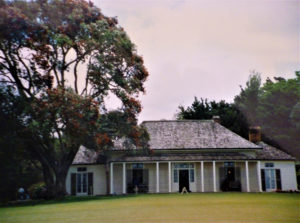
Waitangi Day is a reminder to New Zealanders both Maori and non-Maori, that although we are on the way, there is still much to be done towards honouring the Treaty of Waitangi. The intent of the Treaty lives on.
Liz Hickey rsj
Footnotes:
[1] For more information on the Treaty of Waitangi, visit www.nzhistory.govt.nz/politics/treaty/the-treaty-in-brief
[2] Historic: Maori Land March. Dame Whina Cooper and her granddaughter Irenee Cooper, 3, setting off on a dusty far North road, at the start of the historic land march, 14 September 1975. The march swelled to 5000 people and covered more than 1100kms. New Zealand Herald. Photograph by Michael Tubberty. Used with permission.
[3] Photo of Busby’s House at Waitangi, New Zealand by E C Hickey. Used with permission.
World Day for Consecrated Life 2020
February 5, 2020On 2 February we celebrated The Presentation of Jesus in the Temple, and the World Day for Consecrated Life.
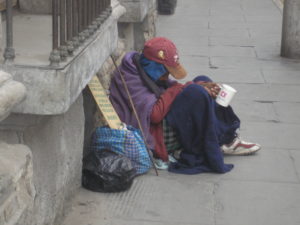
Living and working on the periphery of Lima, Peru for the last 16 years has been a precious time of being with vulnerable people every day whether they have been on the bus asking for support, or knocking at the door of our house or calling on families with multiple difficulties with children who have disabilities and are living in extreme poverty. Sometimes I have recognised the Christ, poor and vulnerable and I have responded, wept, been disconcerted or felt helpless at the situations that they are in. Sometimes I have been hard, unresponsive and impatient, protecting my own vulnerabilities I suspect. At other times I have received the gifts that each brings. Everyone has something to give.
In response to Simeon’s statement “My eyes have seen your salvation” (Lk2:30), Pope Francis in his homily on this day asks, “What did Simeon see?” He answers his question with the observation, “A child: a small vulnerable simple child. But in him he saw salvation, for the Holy Spirit allowed him to recognise in that tender newborn “the Lord’s Christ.” (v.26). Taking him in his arms, he sensed by faith that in him God was bringing his promises to fulfilment.”[1]
Pope Francis goes on to remind us “you fell in love with Jesus, you saw everything in him and enraptured by his gaze, you left the rest behind. Religious life is this vision. It means seeing what really matters in life. …The consecrated person is one who everyday looks at himself or herself and says: “everything is gift, all is grace.”.[2]
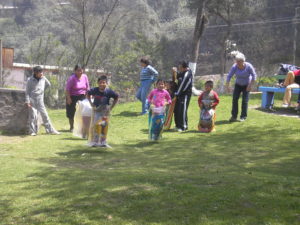
And now I find myself on the Congregational Leadership Team in Sydney, a reality completely distinct from Peru. I bring what I have to this role, having been formed by the people of Peru, rejoicing in my vowed religious life, not knowing what the future holds and called to see the Christ wherever I am.
Clare Conaglen rsj
You are invited to read the Homily of His Holiness Pope Francis for the 24th World Day for Consecrated Life:
Bring Me What You Have
February 4, 2020Ritual of Thanksgiving and Taking Up of Office – Congregational Leadership
As the Sisters of Saint Joseph journey into a new stage of their Josephite life, we invite you to share in the celebration of Ritual of Thanksgiving and Taking up of Office – Congregational Leadership.
We rejoice in the years of Leadership by Sisters Monica, Catherine, Louise, Marion and Maryellen and we look forward in hope as we participate in leadership with Sisters Monica, Josephine, Mary Ellen, Clare and Louise.
Bushfire Reflections
January 31, 2020My Heart is Moved…

We are here for each other
To hold each other in times of suffering and distress
Lost and struggling to cope.
It is we who are the presence of God
In our dry, burnt country.
In responding compassionately
We are in truth
The heart and hands of God.
How can I help?
The effects of fire and drought go much deeper than the physical scars of land, creatures and livelihood. We are all touched and affected by the aftermaths of such events. Here are but a few ways we can contribute to the recovery of spirit and community.
- Buy from the Bush
- Google “How to support farmers in drought and fire” to find a number of suggestions on how to provide practical, volunteer or financial support
- Holiday in rural areas – Australian Silo Art Trail
- Save the Koala Get Involved Bushfire Emergency
- Rituals for Life, Love and Loss by Dorothy McRae McMahon (Book Depository)
- Facing the Drought
- After the Fires
You are invited to watch the Bushfire Reflections Video provided by Elaine Smith rsj:
Image: Dead Trees, Dry, Deserted, Dead, Wood, Trunk, Outdoor obtained from Max Pixel. Used with permission.
